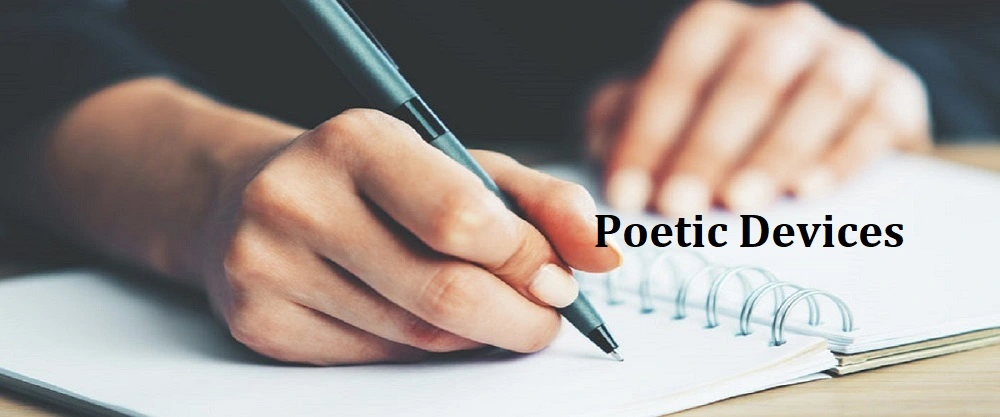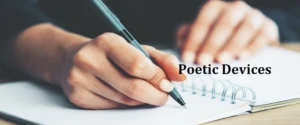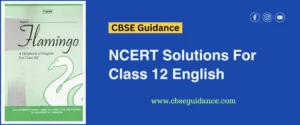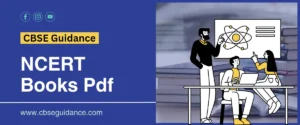What are Poetic Devices?
Poetic devices are tools that poets use to create a more vivid and memorable experience for the reader. They can be used to add rhythm, sound, imagery, and meaning to a poem.
Some common poetic devices include:
- Rhyme: The repetition of similar sounds at the end of words.
- Meter: The pattern of stressed and unstressed syllables in a line of poetry.
- Imagery: The use of vivid language to create a picture in the reader’s mind.
- Metaphor: A comparison of two unlike things that share some common characteristic.
- Simile: A comparison of two unlike things using the words “like” or “as.”
- Personification: Giving human qualities to an inanimate object or animal.
- Apostrophe: Addressing a person, place, or thing that is not present.
- Allusion: A reference to a famous person, place, or event.
- Symbolism: Using an object or image to represent something else.
- Onomatopoeia: The use of words that sound like what they describe.
Poetic devices can be used to create a variety of effects in a poem. They can be used to add humor, suspense, or sadness. They can be used to create a sense of place or time. They can be used to make a point or to simply make the poem more enjoyable to read.
A simile is a figure of speech that compares two unlike things using the words “like” or “as.” Similes are often used to create vivid imagery or to add emphasis to a statement.
For example, the simile “Her eyes were like the stars” compares the speaker’s eyes to the stars in the sky. This simile creates a vivid image of the speaker’s eyes, and it also suggests that the speaker’s eyes are beautiful and mysterious.
The 10 Most Common Poetic Devices
I. Rhyme
A rhyme is a repetition of similar sounds in the final stressed syllables and any following syllables of two or more words. Most often, this kind of perfect rhyming is consciously used for a musical or aesthetic effect in the final position of lines within poems or songs. More broadly, a rhyme may also variously refer to other types of similar sounds near the ends of two or more words. Furthermore, the word rhyme has come to be sometimes used as a shorthand term for any brief poem, such as a nursery rhyme or Balliol rhyme.
Here are some examples of rhymes:
- Love and above
- Blue and flew
- Bat and cat
- Side and hide
- Hit and sit
Rhymes can be used to create a variety of effects in poetry and song. They can be used to create a sense of rhythm and flow, to add emphasis, or to create a sense of humor.
II. Meter
Meter is the basic rhythmic structure of a line of poetry. It is a combination of the number of syllables and the pattern of emphasis on those syllables.
The most common types of meters in English poetry are:
- Iambic pentameter: This is the most common meter in English poetry. It has five pairs of syllables, with the first syllable of each pair unstressed and the second syllable stressed. For example, the line “Shall I compare thee to a summer’s day?” from Shakespeare’s Sonnet 18 is in iambic pentameter.
- Trochaic tetrameter: This meter has four pairs of syllables, with the first syllable of each pair stressed and the second syllable unstressed. For example, the line “The road not taken” from Robert Frost’s poem “The Road Not Taken” is in trochaic tetrameter.
- Anapestic trimeter: This meter has three pairs of syllables, with the first two syllables of each pair unstressed and the third syllable stressed. For example, the line “Upon the sunless shore” from Alfred Lord Tennyson’s poem “The Lady of Shalott” is in anapestic trimeter.
Meter can be used to create a variety of effects in poetry. It can be used to create a sense of rhythm and flow, to emphasize certain words or phrases, or to create a particular mood or atmosphere.
Here are some examples of how meter can be used in poetry:
- To create a sense of rhythm and flow: “The road not taken” by Robert Frost
- To emphasize certain words or phrases: “Shall I compare thee to a summer’s day?” by William Shakespeare
- To create a particular mood or atmosphere: “The Lady of Shalott” by Alfred Lord Tennyson
III. Imagery
Imagery is a literary device that uses vivid description to create a mental image in the reader’s mind. It can be used to appeal to any of the five senses: sight, sound, smell, taste, and touch.
Imagery can be used to create a variety of effects in poetry. It can be used to:
- Paint a picture of a scene or setting
- Create a mood or atmosphere
- Develop a character
- Tell a story
- Express an emotion
Here are some examples of imagery in poetry:
1.Visual imagery: This type of imagery uses words to create a picture in the reader’s mind. For example, the following lines from William Shakespeare’s “Sonnet 116” use visual imagery to describe the speaker’s love:
Let me not to the marriage of true minds
Admit impediments. Love is not love
Which alters when it alteration finds,
Or bends with the remover to remove:
2. Auditory imagery: This type of imagery uses words to create a sound in the reader’s mind. For example, the following lines from Alfred Lord Tennyson’s “The Lady of Shalott” use auditory imagery to describe the sound of the loom:
The mirror cracked from side to side;
“The curse is come upon me,” cried
The Lady of Shalott.
3. Olfactory imagery: This type of imagery uses words to create a smell in the reader’s mind. For example, the following lines from Robert Frost’s “Stopping by Woods on a Snowy Evening” use olfactory imagery to describe the smell of the snow:
Whose woods these are I think I know.
His house is in the village though;
He will not see me stopping here
To watch his woods fill up with snow.
4. Gustatory imagery: This type of imagery uses words to create a taste in the reader’s mind. For example, the following lines from John Keats’s “Ode to a Nightingale” use gustatory imagery to describe the taste of wine:
My heart aches, and a drowsy numbness pains
My sense, as though of hemlock I had drunk,
Or emptied some dull opiate to the drains
One minute past, and Lethe-wards had sunk:
5. Tactile imagery: This type of imagery uses words to create a feeling in the reader’s mind. For example, the following lines from William Wordsworth’s “Tintern Abbey” use tactile imagery to describe the feeling of the wind:
I wandered lonely as a cloud
That floats on high o’er vales and hills,
When all at once I saw a crowd,
A host, of golden daffodils;
Beside the lake, beneath the trees,
Fluttering and dancing in the breeze.
Imagery is a powerful tool that can be used to create a variety of effects in poetry. When used effectively, it can help to bring a poem to life and make it more memorable for the reader.
IV. Metaphor
A metaphor is a figure of speech that compares two things that are not literally alike. It is a type of figurative language that creates a comparison between two things that are not normally associated with each other. Metaphors are often used to create vivid imagery and to add depth and meaning to writing.
Here are some examples of metaphors:
- “The road was a ribbon of black in the night.” (This metaphor compares the road to a ribbon, suggesting that it is long and winding.)
- “Her eyes were like stars.” (This metaphor compares the speaker’s eyes to stars, suggesting that they are bright and beautiful.)
- “He was a lion in battle.” (This metaphor compares the speaker to a lion, suggesting that he is strong and fierce.)
Metaphors can be used in a variety of ways to create different effects. They can be used to:
- Describe something in a new and interesting way. For example, the metaphor “The road was a ribbon of black in the night” creates a vivid image of the road winding through the darkness.
- Add depth and meaning to writing. Metaphors can be used to suggest hidden meanings or to create a more complex understanding of a situation. For example, the metaphor “Her eyes were like stars” suggests that the speaker’s eyes are beautiful and full of light.
- Add emotion to writing. Metaphors can be used to evoke strong emotions in the reader, such as sadness, joy, or anger. For example, the metaphor “He was a lion in battle” suggests that the speaker is strong and fierce, and it can evoke feelings of excitement or admiration in the reader.
Metaphors are a powerful tool that can be used to make writing more vivid, meaningful, and emotional. When used effectively, they can help to create a more memorable and engaging experience for the reader.
V. Similes
Similes can be used in a variety of ways to add interest and depth to writing. They can be used to create vivid imagery, to add emphasis to a statement, or to make a comparison that is not literal.
Here are some examples of similes:
- Her eyes were like the stars.
- He was as strong as an ox.
- She was as quick as a flash.
- The car was as red as a fire engine.
- The house was as big as a castle.
Similes can be a powerful tool for writers. When used effectively, they can help to create a more vivid and memorable experience for the reader.
VI. Personification
Personification is a figure of speech that gives human qualities to non-human things. It is a type of figurative language that gives inanimate objects or abstract concepts human characteristics. Personification is often used to create vivid imagery and to add depth and meaning to writing.
Here are some examples of personification:
- “The wind whispered through the trees.” (The wind is given the human characteristic of speech.)
- “The sun smiled down on the happy children.” (The sun is given the human characteristic of happiness.)
- “The waves crashed against the shore angrily.” (The waves are given the human characteristic of anger.)
Personification can be used in a variety of ways to create different effects. It can be used to:
- Describe something in a new and interesting way. For example, the personification “The wind whispered through the trees” creates a vivid image of the wind blowing through the leaves of the trees.
- Add depth and meaning to writing. Personification can be used to suggest hidden meanings or to create a more complex understanding of a situation. For example, the personification “The sun smiled down on the happy children” suggests that the sun is happy to see the children playing.
- Add emotion to writing. Personification can be used to evoke strong emotions in the reader, such as sadness, joy, or anger. For example, the personification “The waves crashed against the shore angrily” suggests that the waves are angry and destructive.
Personification is a powerful tool that can be used to make writing more vivid, meaningful, and emotional. When used effectively, it can help to create a more memorable and engaging experience for the reader.
VII. Apostrophe
Apostrophe is a figure of speech in which the speaker addresses someone who is not present. It is a type of direct address that is often used to create a sense of intimacy or urgency. Apostrophes can be used to address inanimate objects, animals, abstract concepts, or even the dead.
Here are some examples of apostrophes:
- “O Captain! My Captain!” (Walt Whitman, “O Captain! My Captain!”)
- “Shall I compare thee to a summer’s day?” (William Shakespeare, “Sonnet 18”)
- “Wind, in thy breath, renew my life!” (John Keats, “Ode to a Nightingale”)
- “Oh, what can ail thee, knight-at-arms, Alone and palely loitering?” (John Keats, “La Belle Dame sans Merci”)
- “Death, be not proud, though some have called thee Mighty and dreadful, for thou art not so; For those whom thou think’st thou dost overthrow Die not, poor Death, nor yet canst thou kill me.” (John Donne, “Death, be not proud”)
Apostrophes can be used in a variety of ways to create different effects. They can be used to:
- Create a sense of intimacy or urgency. For example, the apostrophe “O Captain! My Captain!” creates a sense of intimacy and urgency by directly addressing the captain.
- Add emotion to writing. Apostrophes can be used to evoke strong emotions in the reader, such as sadness, joy, or anger. For example, the apostrophe “Shall I compare thee to a summer’s day?” evokes feelings of love and admiration in the reader.
- Add humor to writing. Apostrophes can be used to add humor to writing by making the reader laugh. For example, the apostrophe “Wind, in thy breath, renew my life!” is humorous because it is a ridiculous request.
Apostrophes are a powerful tool that can be used to make writing more vivid, meaningful, and emotional. When used effectively, they can help to create a more memorable and engaging experience for the reader.
VIII. Allusion
An allusion is a reference to a well-known person, character, place, or event in a work of literature. It is a type of figurative language that creates a connection between the work and the reference. Allusions can be used to add depth and meaning to a work of literature, or to evoke a particular response from the reader.
Here are some examples of allusions:
- In the novel “To Kill a Mockingbird,” Harper Lee alludes to the biblical story of David and Goliath when Atticus Finch defends Tom Robinson, a black man falsely accused of rape.
- In the poem “Ode to a Nightingale,” John Keats alludes to Greek mythology when he compares the nightingale to the goddess of night, Selene.
- In the play “Hamlet,” William Shakespeare alludes to the Roman play “Oedipus Rex” when Hamlet compares himself to Oedipus, who unknowingly killed his father and married his mother.
Allusions can be used in a variety of ways to create different effects. They can be used to:
- Add depth and meaning to a work of literature. Allusions can help to create a more complex and nuanced understanding of a work of literature by providing additional context and meaning.
- Evoke a particular response from the reader. Allusions can be used to evoke a particular response from the reader, such as sadness, joy, or anger.
- Create a sense of shared knowledge between the author and the reader. Allusions can help to create a sense of shared knowledge between the author and the reader by assuming that the reader is familiar with the reference.
Allusions are a powerful tool that can be used to make writing more vivid, meaningful, and emotional. When used effectively, they can help to create a more memorable and engaging experience for the reader.
IX. Symbolism
Symbolism is a literary device in which a thing, person, or event represents something else. Symbols can be used to add depth and meaning to a work of literature, or to evoke a particular response from the reader.
Here are some examples of symbols:
- The color red: Red is often used to symbolize love, passion, or danger.
- Water: Water is often used to symbolize life, change, or rebirth.
- The moon: The moon is often used to symbolize mystery, magic, or femininity.
- The sun: The sun is often used to symbolize warmth, light, or masculinity.
- The tree: The tree is often used to symbolize life, growth, or strength.
Symbols can be used in a variety of ways to create different effects. They can be used to:
- Add depth and meaning to a work of literature. Symbols can help to create a more complex and nuanced understanding of a work of literature by providing additional context and meaning.
- Evoke a particular response from the reader. Symbols can be used to evoke a particular response from the reader, such as sadness, joy, or anger.
- Create a sense of shared knowledge between the author and the reader. Symbols can help to create a sense of shared knowledge between the author and the reader by assuming that the reader is familiar with the symbol.
Symbols are a powerful tool that can be used to make writing more vivid, meaningful, and emotional. When used effectively, they can help to create a more memorable and engaging experience for the reader.
X. Onomatopoeia
Onomatopoeia is a literary device in which a word phonetically imitates, resembles, or suggests the sound that it describes. Such a word itself is also called an onomatopoeia. Common onomatopoeias include animal noises such as oink, meow, roar, and chirp. Onomatopoeia can also be used to describe the sounds of inanimate objects, such as the sound of a bell ringing (ding-dong), the sound of a door slamming (bang), or the sound of a car driving by (vroom).
Onomatopoeia can be used to create a vivid and sensory experience for the reader or listener. It can also be used to add humor or emphasis to a piece of writing. For example, the onomatopoeia “pop” can be used to create a sense of excitement or surprise, while the onomatopoeia “bang” can be used to create a sense of danger or violence.
Here are some examples of onomatopoeia:
- The clock struck twelve.
- The dog barked.
- The cat meowed.
- The bird chirped.
- The bell rang.
- The door slammed.
- The car drove by.
- The popcorn popped.
- The fire crackled.
- The water splashed.
- The thunder rumbled.
- The wind howled.
Onomatopoeia can be a powerful tool for writers and speakers. It can be used to create a vivid and sensory experience for the audience, and it can also be used to add humor or emphasis to a piece of writing.
Poetic devices are an essential part of poetry. They help poets to communicate their ideas and emotions in a way that is both beautiful and memorable.
In conclusion, poetic devices are powerful tools used by poets to elevate their work and captivate readers. These devices, such as simile, metaphor, personification, alliteration, and many others, enable poets to create vivid imagery, evoke emotions, and convey complex ideas in a concise and artistic manner. Through the skillful use of language, sound, rhythm, and structure, poets engage their audience and invite them into a world of beauty, imagination, and profound meaning. Whether it’s the rhythmic pattern of a poem, the striking comparisons made through metaphors, or the sensory experience created through vivid imagery, poetic devices enhance the richness and impact of poetry, making it a timeless and cherished form of expression.




